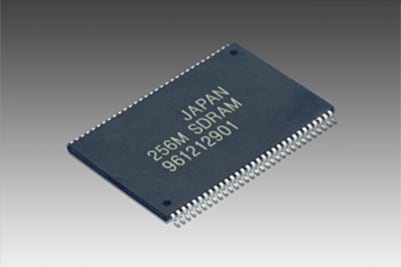Paving the way to circuit integration
The invention of the transistor made vacuum tubes in electronic circuits obsolete, replacing them with germanium- and silicon-based semiconductors to make the circuits smaller and more durable. The rest of the circuits including capacitors, resistors, and wiring remained largely unchanged, however. So, researchers naturally focused on making the circuits even smaller.
Certain improvements were achieved as a result, including the replacement of the aluminum breadboard with the printed circuit board and the introduction of smaller parts. The improvements were limited, however, as long as the basic idea of assembling a circuit using separately built parts remained unchanged.
Kilby's groundbreaking idea
In 1958, the technology to build capacitors and resistors into semiconductors was already there, as well as that for making more than one transistor on a single wafer. At the time, however, most researchers of electronic circuits were preoccupied with the problem of packing a baseboard efficiently with separate parts and devices.
It was Jack S. Kilby, a (then) novice engineer at Texas Instruments, who turned the table around. He proposed that, if transistors can be made by using germanium as a semiconductor material, why not build capacitors, resistors, and all other components on a single piece of germanium crystal, too?
Kilby's idea of building an entire circuit into a single semiconductor device led to the birth of the integrated circuit (IC).
Rapid sophistication of IC technologies

The first IC that came out of Kilby's idea was a single crystal of germanium (size: three centimeters x several millimeters) that contained a transistor, three resistors, and one capacitor. There was much room for improvement, however. For example, it still used gold wiring between terminals as convention dictated.
As vapor deposition technologies were introduced to enable aluminum wiring on a silicon wafer along with resistors and capacitors, Kilby's ICs made further advancements. Because the technologies were also suited for mass production, they contributed to the rapid diffusion and sophistication of ICs.
Moore's law shocks the world
In 1965 when the integration level of IC was around 60 components per chip, a scientific paper caused a sensation by claiming that "By 1975, the number of components per integrated circuit for minimum cost will be 65,000."
The statement was made by Gordon Moore (who co-founded Intel not long afterwards) based on his experience. His astounding prediction that the IC integration level will double every 18 months—popularly known as Moore's law—kept proving itself, thanks to the advancements in semiconductor microfabrication technology. The technology has now reached the nano scale (nano=one billionth), with many IT firms competing at the sub-100 nanometer level.



















